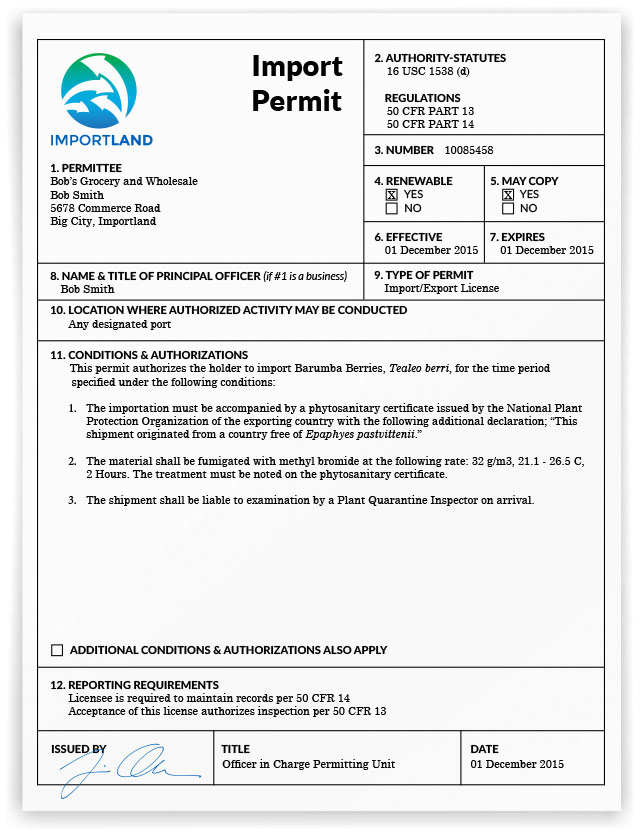Lesson 2: Creating the Phytosanitary Certificate Using the Certification Process
Topic 2: Step 2: Determine the Importing Country's Requirements
Once the application for export is received and reviewed, the NPPO must do a little research to find the phytosanitary requirements for an importing country. In this topic, you will learn about some of the resources needed to ascertain the phytosanitary requirements for any country.
Objectives:
- Participants will recognize the need for correct and current information about a foreign country’s phytosanitary requirements for import.
- Participants will become familiar with a variety of common resources for determining foreign import requirements.
Now that you have the requested information about the export commodity, you need to determine what the importing country’s phytosanitary requirements are. This will require some research on your part as the NPPO’s certifying official.
Remember, import requirements vary by country, commodity, and plant part. They must be strictly phytosanitary in nature. The requirements cannot be related to quality, food safety, letter of credit, concerning genetically modified organisms, or anything else that is not of a phytosanitary nature. These issues fall outside the scope of phytosanitary certification and are often addressed in other ways. There are two main methods commonly used to determine a foreign country’s import requirements: official communication with the importing country and published requirements. Learn more by clicking the box below.
Fortunately, Paloma Perez was able to obtain an import permit from Importland and attached it to her application for phytosanitary certification. This will save the certifying official time and effort as they work to determine Importland’s entry requirements. Not all applications will come with an IP and, in fact, most will not. There are other methods for determining entry conditions, which we will discuss in the next section.


In the absence of direct communication about import requirements, the other reliable source of information is a country’s self-published requirements. Countries often publish agricultural entry requirements in a variety of ways. For example, the United States publishes its entry requirements in the Federal Register. Meanwhile, Panama publishes entry requirements in documents named Resolutions. These tend to be somewhat difficult to search, and the legal language can be difficult to sort through while trying to determine the actual requirements.
Another method a country may use to convey its import requirements is through online databases. One example of an online database for import requirements is BICON, Australia's Department of Agriculture's import conditions website.
BICON—online import requirements database for Australia
Australia's database, BICON, contains the import conditions for more than 20,000 plants, animal, microbial, mineral, and human products. The United States maintains a similar online catalogue called the Fruits and Vegetables Import Requirements (FAVIR) database. Online databases are usually much easier to search and understand than the legal language often used in other publications.
FAVIR—online import requirements database for USDA
Once the importing country’s phytosanitary entry requirements are determined, it is necessary to put them into a database that is available to the personnel that will be certifying shipments for export. The United States uses the Phytosanitary Export Database (PExD). The PExD is used to archive the import requirements of 236 countries for U.S. origin commodities and is available to the certifying officials in the United States. Even though this database is an efficient and reliable way to obtain the necessary certificate information, new information and updates are continually added. Therefore, due to the ever-changing nature of the import requirements, certifying officials must verify the information prior to certifying each new shipment, even if they have certified identical shipments to the same importing country in the past.
Watch this video clip for a demonstration of the USDA’s phytosanitary entry requirements database, PExD.
The second step in phytosanitary certification is to determine the importing country’s phytosanitary requirements for import. There are two resources where the requirements should be available: official communication and published requirements. Certifying officials should check both resources in order to not miss any of the requirements.
To continue, select Topic 3 from the Topics menu above or click here.
